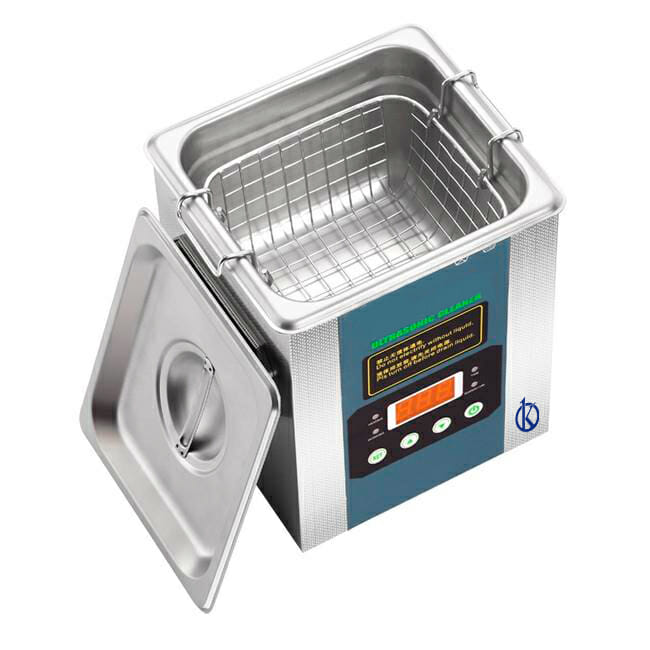Medical ultrasonic cleaners have revolutionized the field of cleaning and disinfection in clinical settings. These devices use high-frequency sound waves to remove dirt, bacteria, and other contaminants from medical instruments, ensuring a level of cleanliness that is difficult to achieve with traditional methods.
In this comprehensive review, we will explore all aspects of medical ultrasonic cleaners, from their design to their performance, highlighting how these devices improve clinical outcomes and enhance diagnostic precision.
Are you yearning for top-tier medical equipment, ready to enhance the efficiency of your laboratory? Visit https://kalstein.it/category-product/laboratory-line/ultrasonic-cleaner/ to explore our high-end catalog, packed with the best finds at the most competitive prices. Excellence marks our brand, we innovate and manufacture high-precision equipment, both reliable and durable to meet your needs. Why wait? Make your quick and secure online purchase, take the leap towards the future of medical technology today. https://kalstein.it/
Design of Medical Ultrasonic Cleaners
The design of a medical ultrasonic cleaner is crucial for its effectiveness. These devices are constructed from high-quality materials such as stainless steel, which resists corrosion and wear. Additionally, their ergonomic design facilitates daily handling and operation. Advanced models include digital displays and touch controls that allow precise adjustment of cleaning parameters.
The cleaning tank is an essential component of the design. It must be large enough to accommodate various medical instruments and ensure the even distribution of ultrasonic waves. The inclusion of airtight lids ensures that the cleaning process is safe and splash-free, protecting the user and the work environment.
Operation and Ultrasonic Cleaning Technology
The technology behind medical ultrasonic cleaners is based on cavitation. This process involves the generation of microscopic bubbles in the cleaning liquid using high-frequency sound waves. When these bubbles collapse, they release significant energy that removes contaminants adhering to the surfaces of instruments.
The frequency of the ultrasonic waves can be adjusted according to the type of contaminant and the material of the instrument. Higher frequencies are ideal for removing fine particles and biological residues, while lower frequencies are effective against larger, more difficult contaminants. This level of precision in ultrasonic cleaning ensures improved clinical results and maximum diagnostic accuracy.
Benefits and Advantages of Medical Ultrasonic Cleaners
One of the main benefits of medical ultrasonic cleaners is their ability to provide deep and uniform cleaning. Unlike traditional methods, which may leave residues in hard-to-reach areas, ultrasonic cleaning ensures that even the smallest corners of medical instruments are free from contaminants.
Additionally, these devices significantly reduce the time and effort required for cleaning. Cleaning cycles typically last between 10 and 20 minutes, increasing efficiency in clinics and hospitals. By reducing the risk of cross-contamination and enhancing disinfection, ultrasonic cleaners directly contribute to diagnostic precision and effective treatments, which are essential for patient safety and well-being.
Impact on Safety and Diagnostic Precision
Patient safety and diagnostic precision are fundamental aspects of medicine. Medical ultrasonic cleaners play a crucial role in preventing nosocomial infections by ensuring that instruments are completely disinfected. This is especially important in invasive procedures, where any residual contaminant can have serious consequences.
Moreover, the effective cleaning of diagnostic instruments, such as endoscopes and probes, ensures that test results are accurate. A clean instrument provides clear and reliable readings, allowing physicians to make informed and precise decisions. This level of cleaning and disinfection improves clinical outcomes and contributes to more accurate and effective diagnoses.
Comparison with Other Cleaning Methods
Compared to other cleaning methods, such as autoclave sterilization or manual cleaning, ultrasonic cleaners offer several advantages. Manual cleaning can be ineffective and labor-intensive, leaving room for human error and potential contamination. Autoclaves, while effective for sterilization, do not remove physical residues from instruments, which can compromise their functionality.
Ultrasonic cleaners, on the other hand, combine physical cleaning and disinfection in a single process, ensuring that instruments are not only disinfected but also free from visible residues. This not only improves operational efficiency but also extends the lifespan of instruments, representing a long-term investment for medical institutions.
User Evaluations and Reviews
User evaluations and reviews from healthcare professionals regarding medical ultrasonic cleaners are generally very positive. Users highlight ease of use, effectiveness in contaminant removal, and reduced cleaning time as major benefits. Many professionals appreciate how these devices have significantly improved the quality of cleaning in their practices, contributing to greater patient safety.
Furthermore, reviews often mention long-term cost savings due to reduced need for instrument replacement and lower infection rates associated with inadequate cleaning. Testimonials from frequent users reflect high satisfaction with the performance and reliability of ultrasonic cleaners, solidifying them as an essential tool in the medical field.
Conclusion: The Need for Precision in Medical Cleaning
In conclusion, medical ultrasonic cleaners represent a crucial innovation in maintaining hygiene and safety in clinical environments. Their robust design and advanced technology ensure deep and effective cleaning, improving clinical outcomes and diagnostic precision.
Compared to traditional methods, they offer numerous advantages that justify their adoption in any medical practice. By investing in ultrasonic cleaners, healthcare institutions can guarantee greater patient safety and operational efficiency, thus achieving more precise and reliable healthcare.

